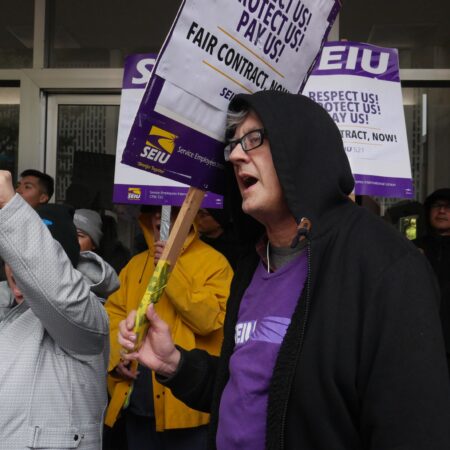Published in Sacramento Bee on September 13, 2011
In a move that could fuel economic growth, CalPERS earmarked $800 million Monday for investments in California roads, bridges, power transmission lines and other forms of infrastructure.
The money is part of a $5 billion worldwide infrastructure effort that CalPERS is creating as it joins the growing list of big investors leaping into that field. Opportunities abound as cash-strapped governments look for new sources of money.
In California, the $800 million in investments could help the state’s troubled job market by directing money toward big construction projects, public and private.
“I am asking CalPERS to invest in California jobs,” Brian O’Neill, an official with the Santa Clara local of the Service Employees International Union, told the pension fund’s investment committee.
The program won’t mean immediate economic salvation, however. CalPERS intends to roll out its investment program over three years.
It’s also not clear how much the California Public Employees’ Retirement System will pour into new construction, which is where much of the job growth lies but is also riskier. The pension fund, still recovering from the crash of 2008, said it’s mainly interested in low-risk investments in existing assets.
CalPERS has to “control expectations” about job creation, said former state Cabinet secretary Dale Bonner, who runs an infrastructure consulting firm.
The pension fund also will avoid deals that could transfer public employees’ jobs to the private sector.
Still, CalPERS officials said there are potential infrastructure investments in California waiting to be plucked, perhaps in partnership with private investors.
“We have a couple of opportunities we are in active discussions on right now,” said Randall Mullan, senior portfolio manager.
CalPERS already has $60 million invested in California infrastructure, including a water storage project in the Antelope Valley south of Bakersfield.
On Monday, the CalPERS investment committee approved a much bigger commitment to infrastructure. Because the committee includes every board member, approval by the full board at its meeting Wednesday is a near certainty.
The plan calls for investments of $150 million to $300 million in each targeted project.
“The outcome could be good if we get all the stars aligned,” said Rob Feckner, CalPERS board president.
The move reflects big investors’ growing appetite for public infrastructure. State and local governments have raised billions of dollars in recent years by selling or leasing major assets – highways, parking systems, and others – to the private sector.
In Sacramento, a task force appointed by Mayor Kevin Johnson has proposed leasing out 8,000 city-owned parking places to generate cash for a new downtown arena.
Yet the privatization or quasi-privatization of public assets has been controversial in some cases.
Gov. Jerry Brown this year canceled the sale of a group of state office buildings, including several in Sacramento, for $1 billion. He called the deal “not prudent.”
And critics still point to the State Route 91 express lanes, a $130 million toll road in Orange County built by private investors in 1995.
The lanes became controversial because of a “non-compete” clause that prohibited the state from making improvements on any roads within a mile and a half. Taxpayers bought out the company’s lease for $207 million.
CalPERS said it will balance its investment goals with other objectives.
“It is an investment opportunity; it is not a social program,” said board member J.J. Jelincic, a past president of the California State Employees Association.
CalPERS will rule out many investments altogether. It won’t invest in privatization deals that would take jobs away from the very employees who belong to CalPERS.
“The last thing anyone wants is, ‘Oh, my retirement fund just displaced my job,’ ” Feckner said



